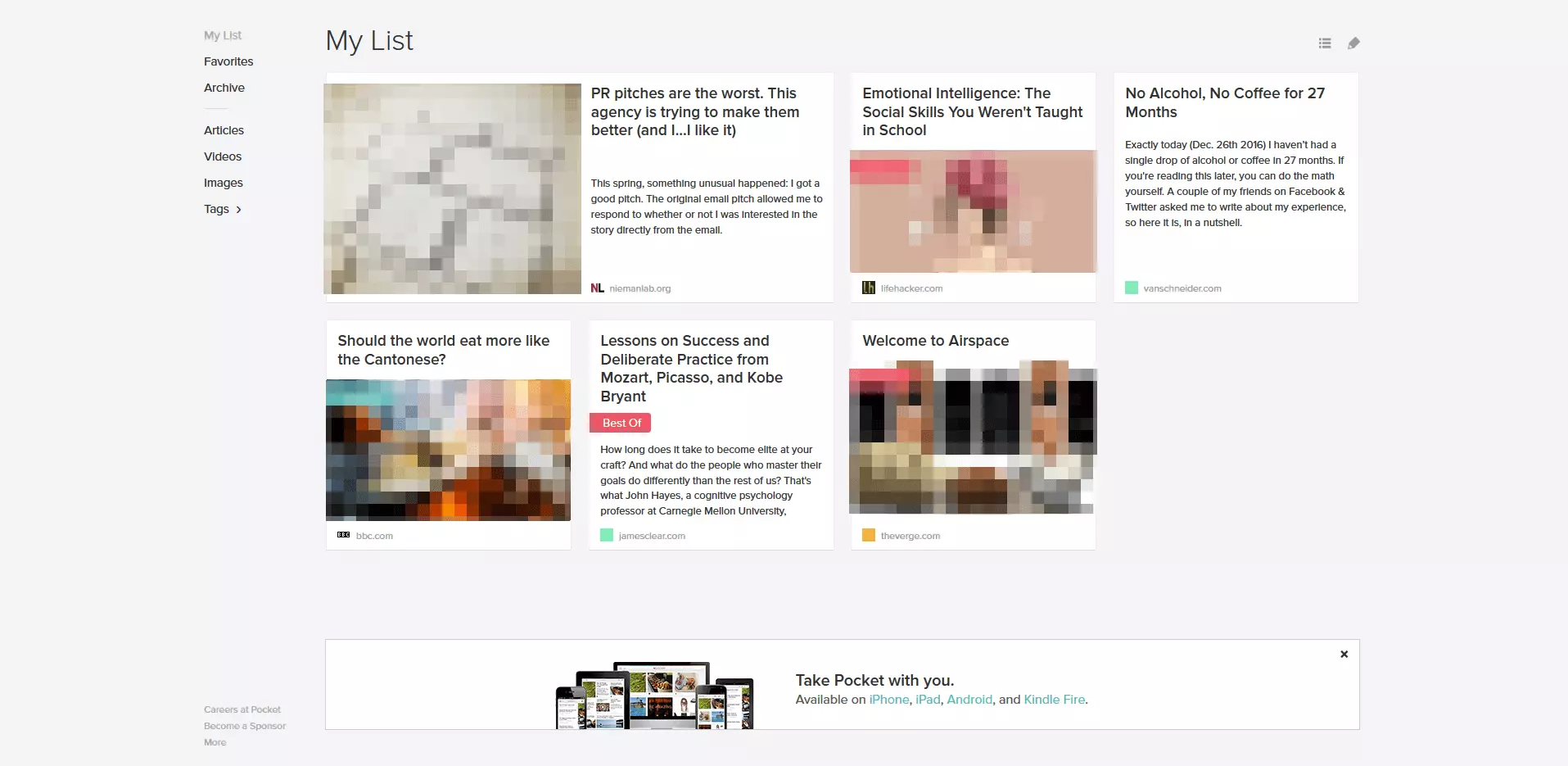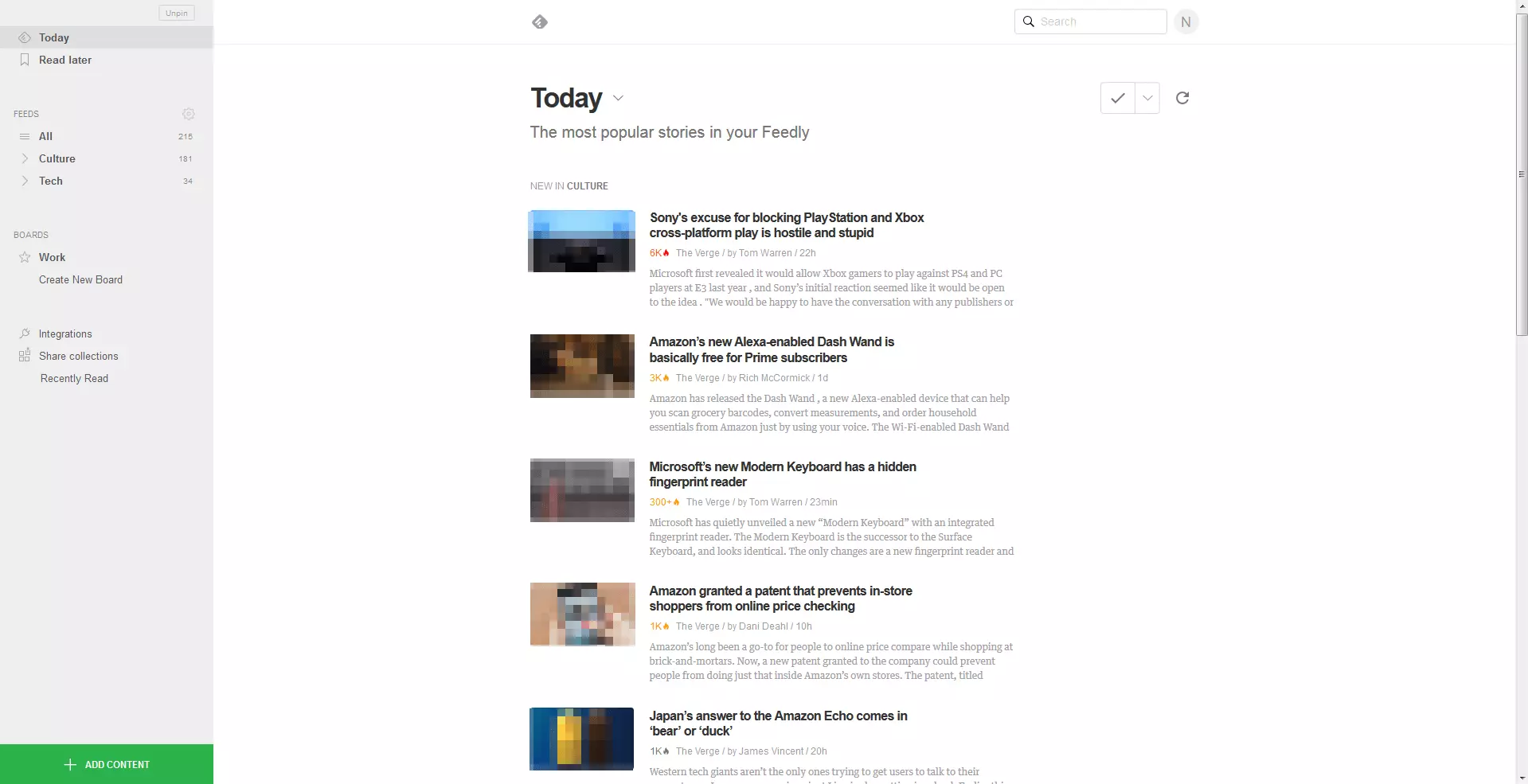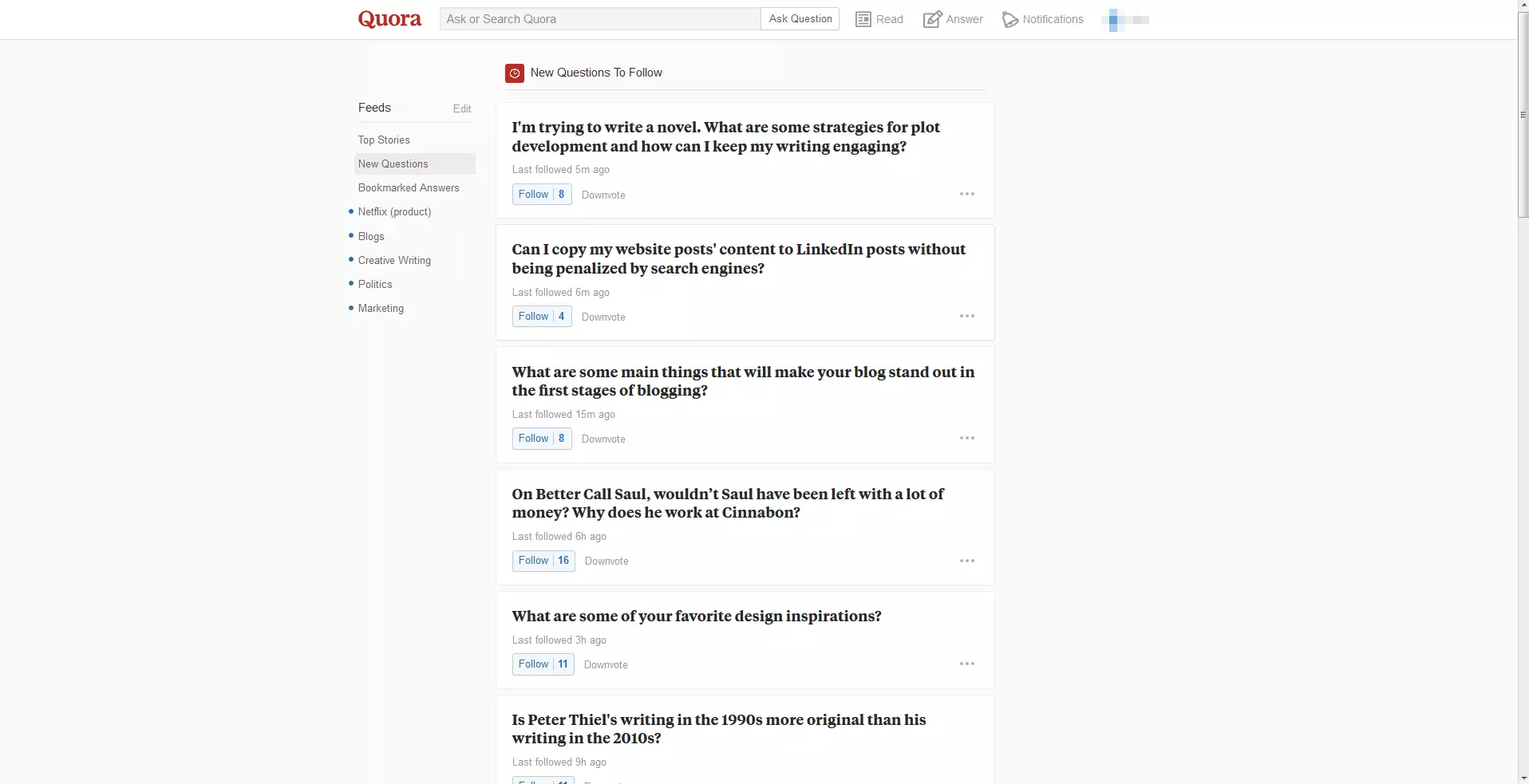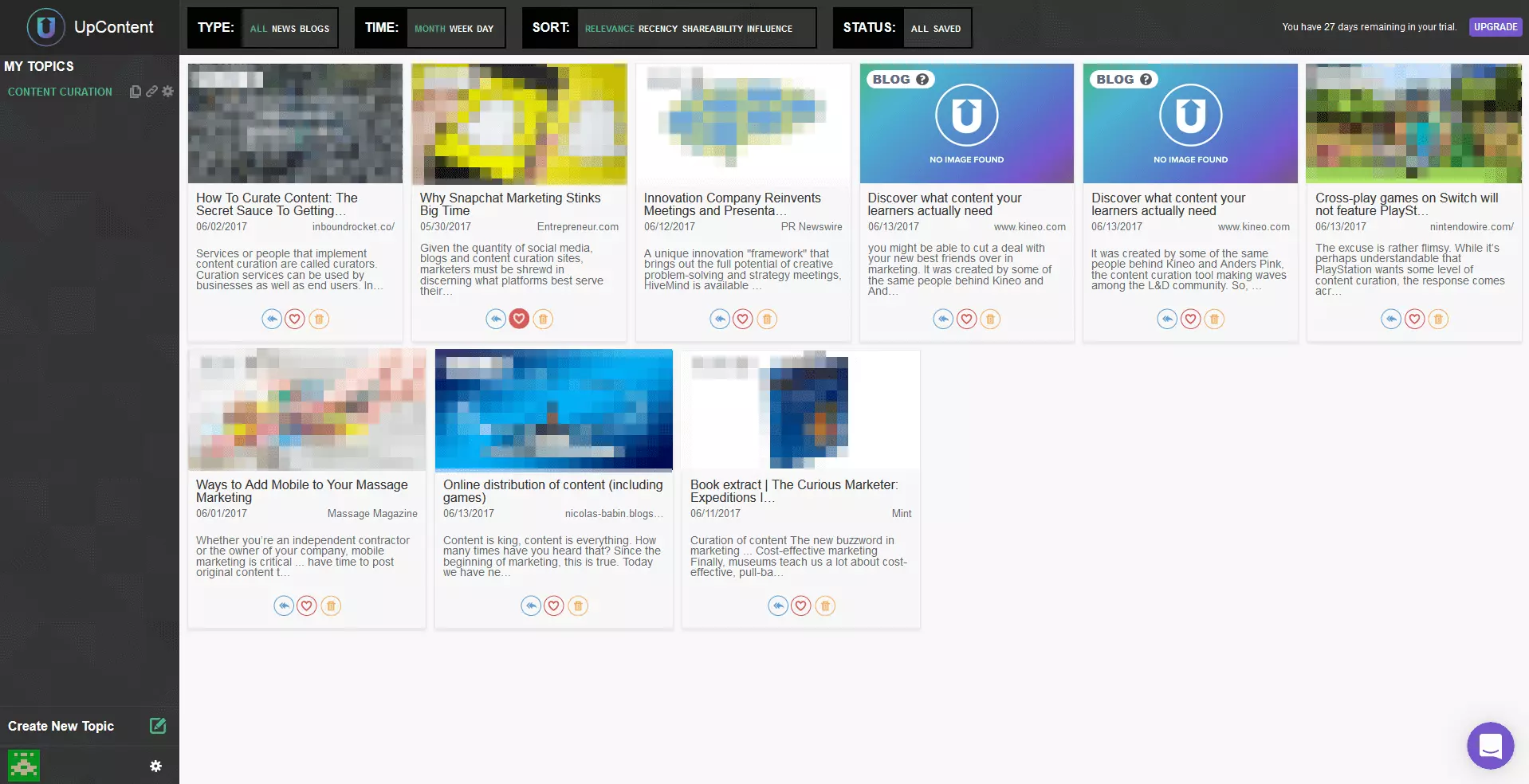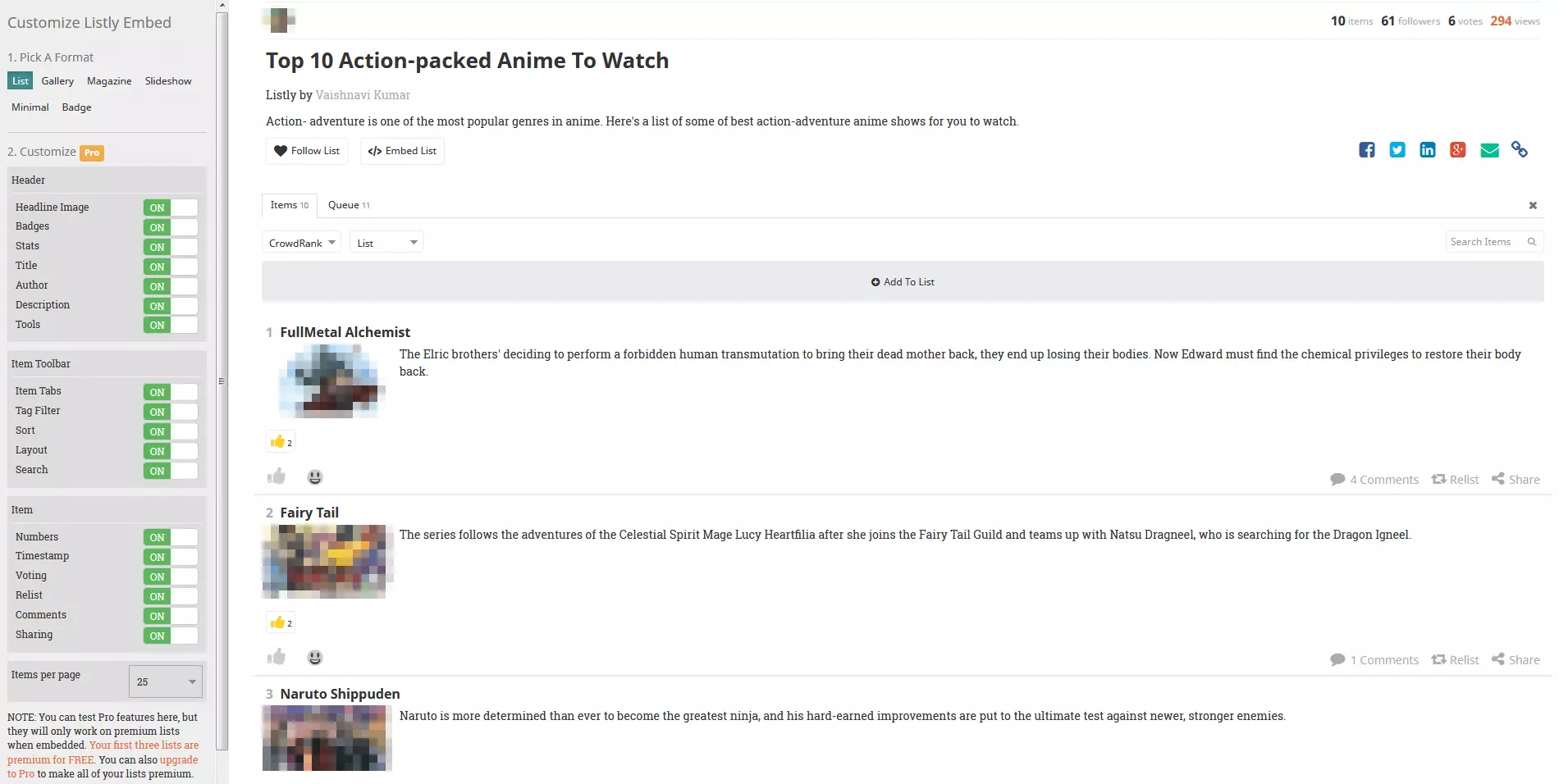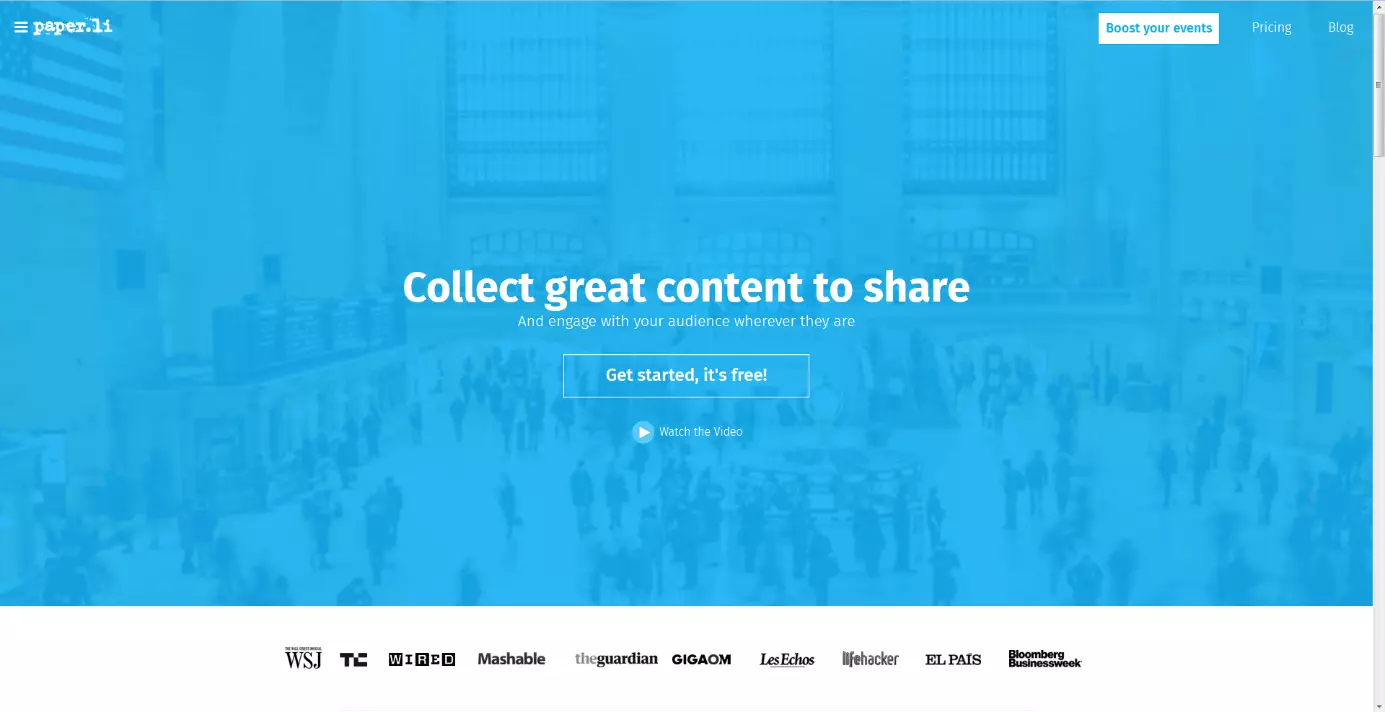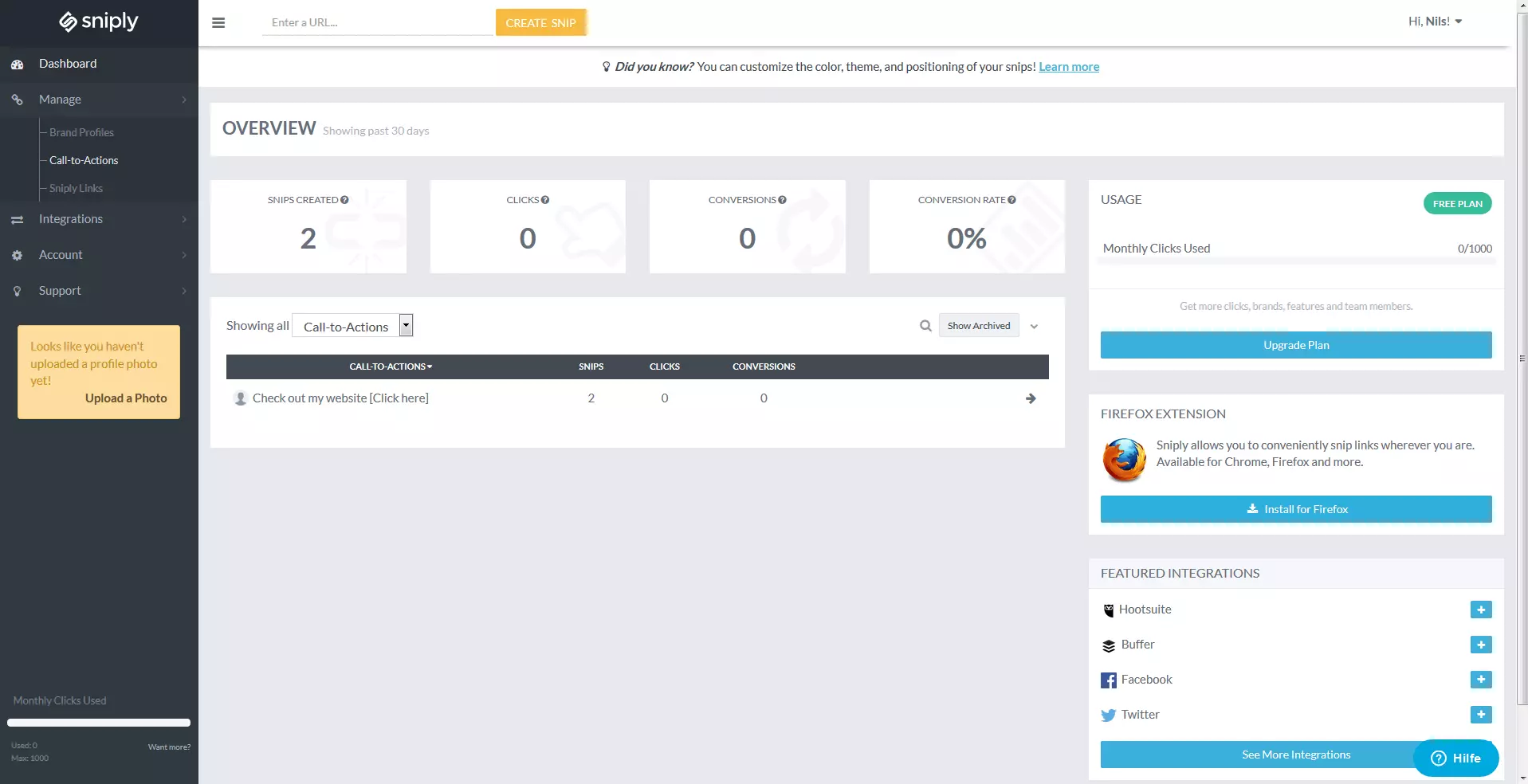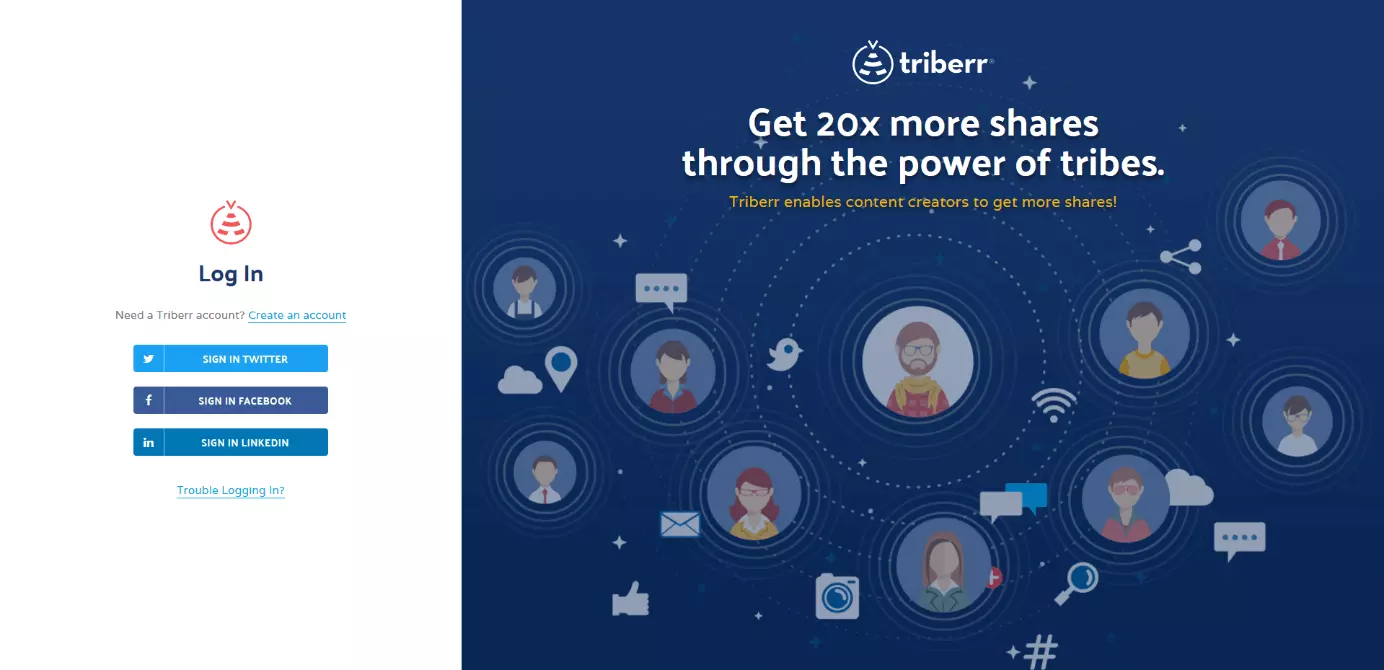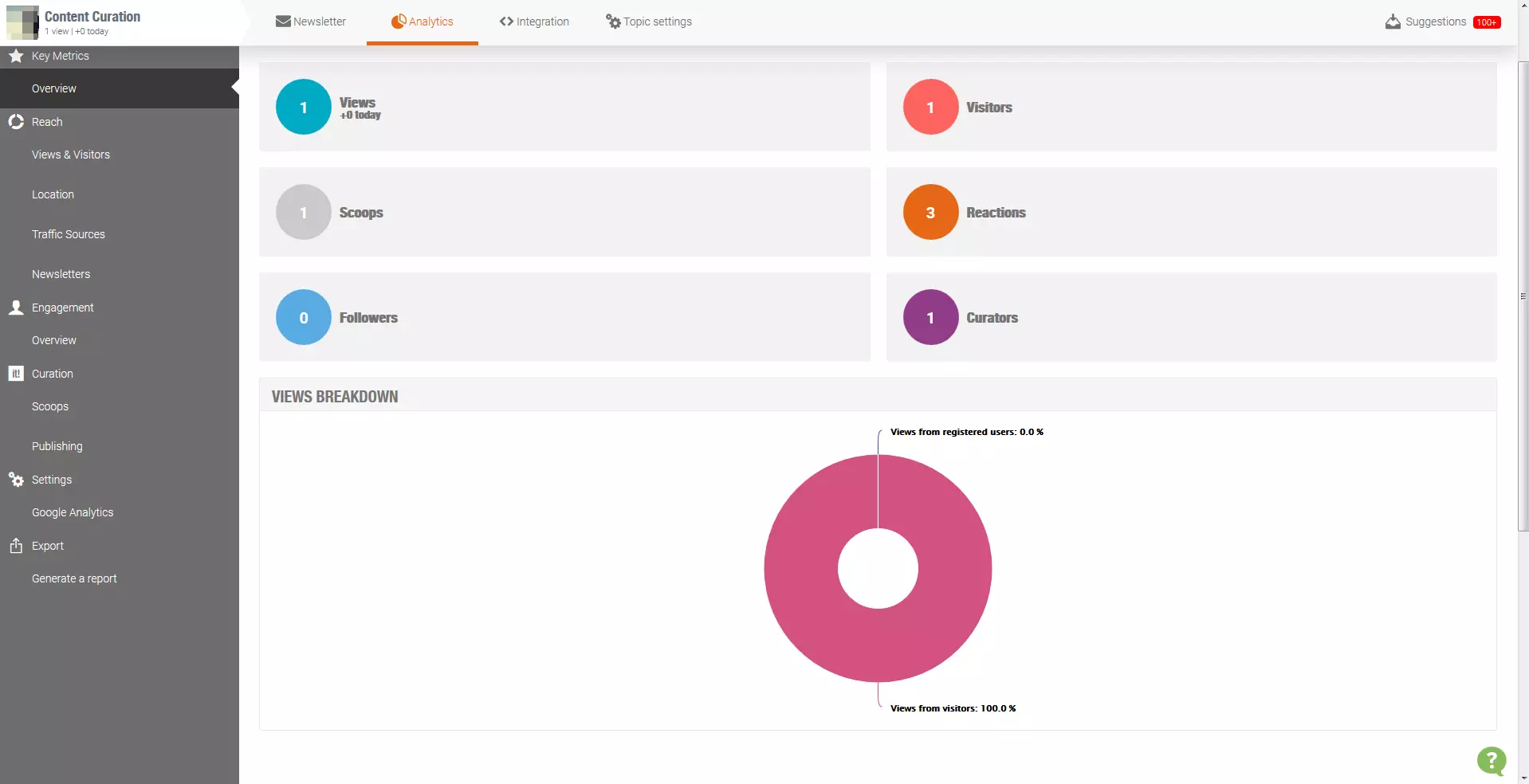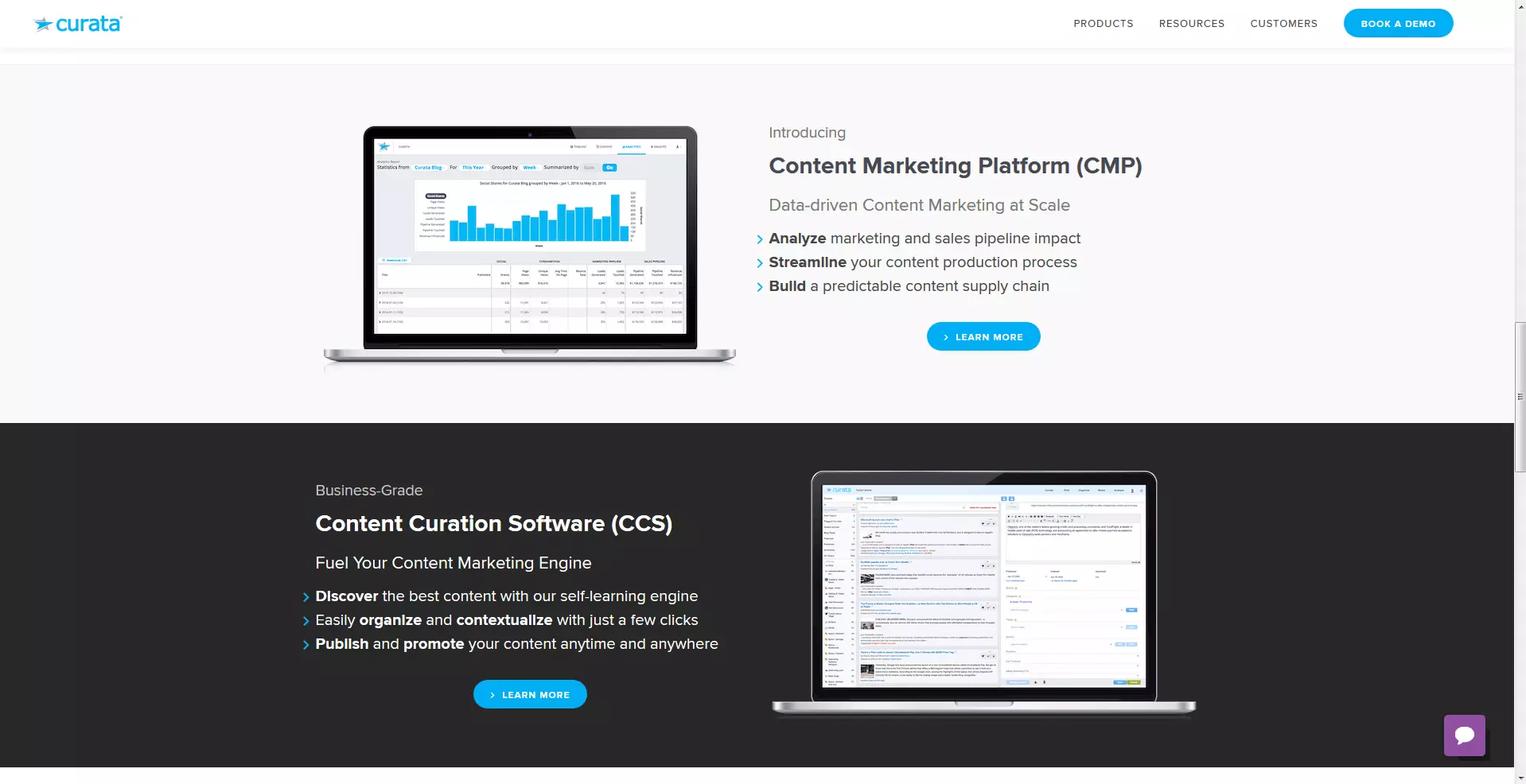10 Content Curation Tools at a glance
Content marketing no long means just creating your own content: due to the growing flow of information as well as the need for users to be able to find interesting content quickly and easily, a special kind of content marketing is gaining traction: content curation. When curating articles, photos, infographics or videos, the aim is not to share your own content to your audience. Instead, the point of content curation is to select, present and comment on already available content on the Internet. Content curation can involve marketing any content. However, sharing your own content is far less important in content curation than in other areas of marketing. When it comes to implementing a content-curative strategy and researching appropriate web articles, most curators have the same amount of information as any other user. To ensure that market experts can collect, process and distribute content as efficiently as possible, different providers have developed special content curation tools.
What do these Content Curation tools need to be able to do?
Content curation tools must be able to do the following:
- They need to be able to filter interesting and entertaining content from a large, confusing stream of information
- Organize the content they collect
- Present the curated content in an appealing way
News and interesting articles can be found on a lot of channels: social media, blogs, newsletters, news pages – and on traditional media streams like newspapers, radio, and television. Of course, nobody can screen all these outlets around the clock. Tools that provide a good overview of their collected content can really help content curators do their jobs. So, once you’ve found relevant posts, what happens next? Not all interesting content should be shared with your followers immediately, some will need to be commented on, or shared as a comparison or follow-up to previous posts. Many content curation tools can make this task easier. If you have chosen and edited an interesting article, then it just needs to be sure and reach your audience – and the right tool can help with that.
However, not every content curator needs software solutions for all of these issues. Therefore, the different tools we will discuss will each be tailored to suit specific needs.
Content Curation Tools for Viewing and Collecting
Before you can curate content, you first need to sift through and collect it. There are several helpful software options to help with this.
Finders, keepers! The online service Pocket makes gathering information easier. Photos, videos, and articles can easily be stored in your digital Pocket, saving you extra desk paperwork or unclear text files. To make storage as easy as possible, the save-for-later service has created extensions that can be added onto most popular browsers, now even coming pre-installed with Firefox. Pocket also provides apps for Android, macOS, and iOS. To make Pocket compatible with other applications, the US company allows independent developers to create additional interfaces. As a result, more than 60,000 apps have already been created – 400 of which can be found directly on the Pocket website. These can also be linked to services like Twitter, Zapier, Zite or Flipboard. These key features are available in Pocket’s free basic version. Those looking for professional content curation, however, may find the premium version better: while the free version can only store hyperlinks to content, premium customers can save copies of the content. This means that even after content has been changed or deleted, there will still be an original copy preserved in the premium users Pocket list. Pocket Premium also helps you organize and collect content, which is especially helpful for professionals. The paid version offers a full-text search, including Pocket’s own archive and articles from their site. The premium feature “Proposed Tags” is also interesting: Pocket analyzes how users categorize their stored content and independently suggests appropriate tags. A disadvantage of the service is that multiple users cannot collaborate on the same list. Content curators will need to create an account for all their colleagues or share each piece of collected content with their colleagues separately.
| Pro | Contra |
|---|---|
| Fast and easy operation | Not possible to collaborate as a team |
| Overview | |
| Help with categorizing content | |
| Lots of interface options with other applications |
Pocket by itself is insufficient for professional content marketing. There are too many important functions missing – like being able to publish collected content. Pocket is more suited to be used as a supplement to other tools, thanks to its simple usability (particularly with Firefox).
Feedly
Just like Pocket, the free content curation tool Feedly is not primarily intended to store content, it’s aim is to help users read and view content. They use the web interface or a mobile to store blogs and content from news outlets, rather than having to visit each individual page. However, the tool is only suitable for reading RSS and news feeds (hence the name Feedly). If you want to save an article to peruse later, you can mark it and add it to an extra list. Adding feeds is easy: the service already knows the largest media providers and users can find them using a search mask. If you want to add more unknown blogs to your feeds, you can enter the corresponding RSS feed address manually. There are two different ways to display content: you can view each source’s posts individually, and they can be divided into thematic groupings. The other option is to have the latest material from all the outlets displayed in your daily feed. The only problem is that once they have been read, posts will disappear from view. Feedly also recently introduced “boards” to their program. Similar to Pocket, content can be stored on the boards, including material found on the internet outside the Feedly application. Like their competitor, you can manually insert material onto your board, or use a browser extension. Feedly’s potential does not really become clear until you start talking about the paid version. The free version restricts the number of sources, collections, and boards you can create while the paid version is unlimited. The paid version also includes a practical keyword alert feature. This allows Feedly to search Google News for popular keywords. New material related to these words will then appear in an extra feed or in your daily homepage view. There are more functional options with the paid version too: for example, stored articles can be edited with annotations and digital text markers. Feedly provides is a team version, giving it the upper hand over Pocket. The paid version is worthwhile because it allows you to work with boards, as well as keep track of sources. The paid version also allows for links with Zapier, Evernote, OneNote, Hootsuite and even their competitor, Pocket.
| Pro | Contra |
|---|---|
| Easy to use | Only intended for viewing texts |
| Keyword Alerts | |
| Annotations and text markers can be used in saved articles | |
| Collaboration options in the team function |
Feedly is a helpful tool if you already know what sources you want to keep an eye on in the first place. Storing and editing articles using the tool, as well as working on it with colleagues, can be a great help with content curation. However, since the RSS reader can only save text, not pictures and videos, you will need another tool to help with overall content curation.
Quora
If you don’t ask, you’ll never know! Quora is based on the principle that with any knowledge first comes a question. During registration on the question and answer portal, users first select their areas of interest. This then creates a wide range of suggestions for the user. In the second stage, the service refines its search even more by asking extra questions about your specific areas of interest. After this, registration is finished and you can search your questions, read responses and participate as an expert. This is Quora’s real function: it is not a content curation tool per se, but it can be well-utilized for the purpose.
When it comes to content marketing, it is important to have your target groups’ interests, preferences and needs in mind at all times. Quora provides a very good approach to this: what questions does the community have regarding a certain topic? Knowing this is useful both for content curation and also for content creation. In terms of content curation, the best and most appropriate answers are voted upwards (similarly to Reddit), and they become the most visible. These popular answers or posts can then be easily found by content curators, who can then share them with their audience by sharing them on Twitter or Facebook, or using a direct link.
A special feature of the service is that the founders (two former Facebook employees) were able to gain lots of celebrity support for their platform: Stephen Fry, AOL founder Steve Case, Hilary Clinton and many others. Providing answers to frequently asked questions is a good way to establish yourself or your company as experts in the field. The platform also gives users the opportunity to run their own blog on it.
| Pro | Contra |
|---|---|
| Insight into your target group’s mindset | Comparatively small community |
| Answers provided by experts | Communication is limited to just the English language |
| Relevance of answers is determined by the crowd |
Quora offers an interesting approach to content marketing: viewing questions from the intended target group gives you an insight into their interests and needs, which can otherwise be difficult to obtain. Quora users are limited mainly to the USA and India so it may not be the best tool for researching user interests in an international setting.
UpContent
Not everyone has the capacity to maintain an overview of all current topics and discussions at all times, which is what needs to be done to ensure excellent content curation. That is where content discovery tools come in, UpContent being one of them. The user specifies certain search details in the tool: Which words should be searched for? What keywords need to appear in the content? What keywords should not appear in the content? Once these questions have been answered, UpContent searched several million news pages and blogs, then presenting you with the most interesting results. You can decide whether you only want to see news items, blog posts etc. It is also possible to determine the time period the texts should be from –from yesterday, from last week, from last month. UpContent sorts through old articles regardless. There are different sorting options which may be helpful: you can arrange the articles according to novelty, relevance, shareability, and influence. The first factor is pretty much self-explanatory (relevance is related to how much the result matches the search query), while the other two may need to be explained: ShareContent identifies the probability that the target group will interact with the content (sharing, commenting, etc). To do this, the program analyzes whether there are images in the article or certain words (Power Words) that have been noticed by the user. The influence, however, results from the links within the search results. The article with the greatest influence is the one that most articles refer to, the center of the discussion. UpContent’s main function is to find content; in order to share content, you will need to use a different content curation tool called Buffer. The two platforms can be connected together using an interface. This means that you can post material you find on UpContent to social media via Buffer. If you prefer working with the social media management tool Hootsuite, that’s also no problem. The help section of UpContent explains in detail how this content discovery tool can be integrated with other applications. UpContent also offers two versions: free and paid. Both versions have the same basic functions, however, if you are a professional content curator, it is worth opting for the paid version. It allows you to monitor as many search queries as desired, rather than just one, and it also doesn’t feature any self-promotion of their own content so that you might share it.
| Pro | Contra |
|---|---|
| Several million sources | Only news and blog articles can be stored and shared, no other content |
| Sort by Shareability and Influence | |
| Very clear overview: everything can be found in one interface |
UpContent is a useful content curation tool, and even the paid version is comparatively inexpensive. Anyone who uses content curation to record their social media, and is willing to use Buffer or Hootsuite too can get very good results with UpContent.
Publication tools
Once they have finally found the right content for their target group, curators then have to comment on it, add to it by providing additional information, or integrate it into existing content before sharing it. If you don’t have the option or the inclination to do this manually, there are a number of tools you can use to help you.
Listly
Listly works very well on the internet: the biggest buildings in the world, the cutest puppy pictures or the best content curation tools in comparison. With Listly, you create graphically advanced lists, which are offered on the provider’‘s homepage, as well as your own. The special thing about Listly? The community works on the list. Users can suggest further entries or influence the arrangement of the list by “liking” certain posts.
Not just your own lists, but the lists of others can be inserted by embed code into your blog or personal website. Listly offers an editor for this purpose, so you can decide for yourself how you want the list to appear. In addition to the normal list view, slideshows or galleries are also available. If you subscribe to a premium subscription, you can even further customize the lists.
In principle, using Listly is free of charge. However, if you want to create more than 1 list per week or 10 list entries per day, you should choose a Pro Account. In addition to the list design options, paying users have access to extended moderation functions and the possibility to integrate affiliate links. Additionally, the offer is only free of advertising in the premium version. A team version is also available, in which several employees can edit an account.
Listly is easy to use through the manufacturer’s website, but also offers other access options. An app is available for iOS, there is an extension for the Chrome browser, and with a WordPress plugin you can quickly integrate lists into your CMS.
| Pro | Cons |
| Graphically appealling lists | Only useful for the creation of lists |
| Embed code | Low content discovery |
| Community integration | |
| Plugins and extensions |
Although Listly only provides limited support for curators in finding content, the website offers numerous ideas and ready-made content to share. The integration of readers, as well as the graphic design possibilities make Listly a unique content creation tool.
Paper.li
Paper.li, often referred to as Twitters’ newspaper, runs almost automatically. The idea behind it is simple: users enter a search term, specify sources and then the system creates a new “newspaper” every day. You can select well-known social media channels, or the program’s own search function as your sources. The latter provides the supposed “best articles” on a given subject. Paper.li is known as Twitter newspaper because the “social media agent” shares the daily newspaper post automatically on the users’ Twitter account.
If you want to use this program for content curation, there are two things you need to keep in mind: first of all, it is worth investing in the paid version, because just using the basic version will not give you sufficient functions. If you get the paid version, you will have some powerful features at your disposal: Paper.li can then also be used for Facebook and Linkedin and can also give you the option to share your newspaper using an embedded blog code.
Second of all, you are better off forgoing complete automation. For content curation, it is important that your content is well maintained. Readers will not be impressed with a randomly assorted daily overview. However, items selected by the system can be manually removed from the overview. In the same vein, you can also manually insert articles found online into the overview. Each daily newspaper also allows the user to make comments on the content. Paper.li earns its nickname as Twitter’s newspaper by being an excellent content curation tool.
| Pro | Contra |
|---|---|
| Full automation is possible | Requires a lot of manual setup to use it effectively. |
| Post-layout is customizable | Content can only be shared among three social media channels |
Paper.li is a good introduction to content curation, especially for beginners. Users who have a professional background should get rid of the automated functions though, which are essentially the main feature of the tool. Automated content will not meet the high demands of a growing audience.
Sniply
Many content marketing entrepreneurs and marketers experience the problem of linking to third-party content rather than directing potential customers to their own content. The service Sniply creates a solution to this problem. The platform allows its users to create a call-to-action button that pops up in shared content and directs visitors to their own website. But how does it work? First, the content curator makes the CTA button. They can customize the button’s appearance (small box or wide footer), enter their website details and a suitable text snippet. Then the actual curating begins: the corresponding web content is inserted into the empty dashboard. With just one click, Sniply creates a new link. When a content curator shares this link on social media instead of the original link, the CTA button will appear on the linked webpage. While the user scrolls, the button travels with them, never leaving their view. To make the “snipping” process as easy as possible, the web service provides users with a browser extension. This way, the created links can be distributed by Buffer or Hootsuite, or through social media channels. Another useful feature is that Sniply acts as a link shortener. The new snip issued by the program (called a hyperlink) is always a shortlink in the “snip.ly/…” format. However, some users are reluctant to click on these links because they cannot see what site they are being led to. To counter this, you can use your own domain, however, the name servers still have to mention Sniply. The link created by Sniply also has other benefits: since forwarding curated content always happens on Sniply, the tool can analyze their target audience’s behavior. Sniply analytics collected data such as click conversions (how many visitors followed the CTA button), time on the site, or bounce rate. If you want more information, you can also use custom scripts to link to other analysis tools, like Google Analytics. The perfect marketing tool to improve statistics is the A/B test button. You can then store multiple button variants for the same link. The system automatically rotates and analyzes the different versions for the best results. However, this is only an option with the paid version. Further advantages of the paid version are that the reference to Sniply disappears in the CTA button, several brands can be managed at once and you can have team access to your Sniply account. Using your own domain as a link will incur an extra fee.
| Pro | Contra |
|---|---|
| Reference your own website with the CTA button | No content discovery function |
| Link shortener | The author’s website cannot be seen in the free version |
| Analyze user behavior | |
| Team collaboration | |
| A/B tests |
Sniply delivers two important features for content curation: on the one hand, the CTA button directs traffic to your own site. On the other hand, the analysis options and the A/B test provide important statistics that facilitate content marketing.
Triberr
Triberr will help you find the right contacts for any topic. If an influencer shares content, the range of that content will increase significantly due to the high level of followers that influencer has.
Registration on Triberr can be easily done using your social media account – either Twitter, Facebook or Linkedin. Once registered, users can join “tribes” or communities of a particular interest. One topic may have several subdivided tribes (for example, Design or Podcasts) with different preferences. To streamline your dashboard, you can request logs with a minimum range (calculated from members’ Twitter followers) or a minimum number of members. But before users can become members themselves, they have to become “simple” followers first. Then the chief (group creator) can promote the follower to member status if they desire. This ensures high-quality content within the tribes.
Tribes are not just a great way to get to know influencers, they also offer the chance to distribute content. Posts appear in each Tribe members’ stream. Additionally, you can share your own posts on social media channels, as well as the posts of other Tribe members – making it a valuable tool for content curation. Anyone who is particularly enthusiastic about another Tribe-mates’ material can even activate the Auto-Share mode for their content and automatically forward each post to their own social media followers. In addition to content curation and content marketing, Triberr also focuses on influencer marketing.
Marketers can use the platform to create campaigns that bloggers can then join to write about the brand. The appropriate influencers can be found using a selection algorithm. The contract matters and payment for influencers can also be handled by Triberr, meaning that the service is essentially completely free. The two Triberr options Lite and Prime membership offer the same features, one just has a bit more scope: with the premium version, you can create larger Tribes and more of them, connect more blogs and social media accounts with your own profile, and import more posts.
| Pro | Contra |
|---|---|
| Option to find influencers and curate their content | Content input is relatively limited |
| Influencer marketing | No options to interface with other applications |
| Share your own content | |
| Increase your reach using influencers |
Like Quora, Triberr offers an innovative approach to discovering new content. The fact that you can distribute your own content (sometimes to a very wide audience) is extremely appealing to content marketers. However, there is a lack of good publishing options or the ability to work with other relevant applications.
The All-Rounder among Content Curation Tools
Working with multiple tools at the same time is often too cumbersome for content marketing professionals who curate content on a daily basis. However, there are some applications which try to meet all the requirements simultaneously.
Scoop.it
Using Scoop.it brings you into the world of all-in-one solutions. The service offers content discovery, as well as the ability to publish curated content. The setup is quite simple, and is similar to other content curation tools: once you have outlined your fields of interest, the curating can start. Each user creates topics that act as “boards”, featuring collected articles and also becoming a kind of blog on the platform. The design can be adapted in many ways – editing with HTML and CSS is also possible. The content can also be integrated into your own website or a WordPress blog. The developers of Scoop.it have even thought so far ahead, that curated topics on the platform are no longer visible to the public, meaning that Google does not evaluate the pages as duplicate content and doesn’t penalize them in search engine rankings. As usual, individual “scoops” (the content you want to curate) can be distributed on social media channels. It is also possible to provide a Buffer link. Scoops can be pre-planned and publication pre-scheduled.
Connecting to your own social media account is not just useful for distributing content but also for sifting through content. Scoop.ie functions as a slimmed down social network, since you can follow curated topics and keep an eye on your own favorite curators. Additionally, Scoop.it provides informative analysis on each topic. If you want to use your collected scores for newsletter marketing, that is no problem. The newsletter’s design can also be altered as required.
The paid version is the only really suitable one for use if you are a professional content curator since it’s the only option if you need to integrate existing websites.
| Pro | Contra |
|---|---|
| Combinations of Content Discovery and CMS | Essential functions are only included in the paid version. |
| Analysis options | |
| Create a newsletter | |
| Teamwork | |
| Social networks |
With Scoop.ie, you have everything you need for content curation: the system suggests quality content and delivers a powerful CMS. Since multiple users can work together on a topic, the service is also suitable for use among marketing teams. Despite important features only being available on the paid version, it is relatively inexpensive compared to their competitors.
Curata
Curata’s content curation software is the standout product available on the market. Like their competitor Scoop.it, this tool also offers customers an all-in-one-solution to their content curation needs. Curata relies mainly on machine learning skills. Like other content discovery tools, Curata suggests content in the user’s pre-selected area of interest. To do this, several hundreds of thousands of sources are searched for material. However, by using the software, the system learns that the posts presented are based on what the user has considered relevant in the past – this is how the system calculates the “relevance score”. The program goes into even further detail for the user, categorizing content automatically. Therefore, the curator can manage their collected articles, photos or videos with less effort required.
Decent content curation is not just collecting and sharing content: Curata’s product also includes a text editor that allows you to add your own content to the curated material. In order to liven up your content even further, Curata also supplies royalty-free images that match your content topic. You can publish content on the integrated HTML5 site, which is provided by the system. Once again though, this is not sufficient for professional marketing, which is why interfaces to various CMS (Wordpress, Joomla, Drupal, etc.) and marketing platforms (MailChimp, Hubspot, Marketo, etc.) are available. Of course, sharing on social media is also an option.
Curata is primarily aimed towards large companies, like IBM and Dell do with software. This aim is also the reason why the program allows multiple users to collaborate on a project simultaneously, as it is very important for large marketing departments to be able to do this. Accordingly, there is no free version of the tool for individual users. In addition to the content curation software, the provider also provides a content marketing platform. This allows content to be better planned, produced and analyzed for campaign success.
| Pro | Contra |
|---|---|
| Machine learning | More expensive |
| Automatic Categorization | |
| Lots of sources for content discovery | |
| Good CMS | |
| License-free images |
Curata is a professional content curation solution. In particular, the machine learning algorithms are unique. However, this comes at a cost: although prices are not visible on the website (each company must request a quote individually), prices are likely to be several hundred dollars per month. This really makes the software only useful and feasible for larger companies.
Summary
Even curators on a tight budget can find content curation tools to make their work easier. However, to avoid unnecessary costs, you should ask yourself what you really need. Anyone working with social media management and CMS services does not really need an all-in-one solution. Helpful tools like Pocket and Feedly in combination with a content discovery tool like UpContent can make a big impact. Even if you opt for more extensive programs, it is sometimes still worth taking a look at Quora or Triberr. Their innovative approaches provide input that you will have a hard time finding elsewhere.
| Tool | Can you save content? | Can you discover content? | Analysis and Statistics | Publishing | Free version available |
|---|---|---|---|---|---|
| () | x | x | |||
| Feedly | x | x | |||
| Quora | () | x | () | ||
| UpContent | x | x | |||
| Listly | () | x | |||
| Paper.li | x | ||||
| Sniply | x | x | () | ||
| Triberr | x | ||||
| Scoop.it | |||||
| Curata | x |


